This has been an unusual year, to say the least. While our staff hasn’t been able to travel as much as we would have liked, we still managed to test more than 25 great mountain bikes over the past ten months. Looking back, these are the ones that impressed us the most.
Canyon Spectral AL 5.0

Despite the Canyon Spectral being one of the least expensive bikes I tested in 2020, it was also one of my favorites. From the moment the bike box arrived on my porch, the process of getting the bike fully assembled and dialed went smoothly. All of the packaging and provided materials are consumer-friendly in a way that is sure to give online mountain bike buyers confidence.
We’ve spent the past few years writing about brands bringing 29er wheels to every imaginable platform because bigger wheels are more stable, or faster, or just “better.” My personal mountain bike stable has been fully 29er since 2009, so it’s weird to admit I had so much fun riding this 27.5-inch-wheeled bike.



The Spectral climbs well, which isn’t surprising given the fact that it’s a trail bike. Still, the fact that the bike manages to tame 150mm of rear travel when things get pedally, and doesn’t feel weighed down by the aluminum frame, is impressive.
On descents the Spectral offers gobs of travel for trail riding, keeping the rider in control through rough, fast descents while offering just enough extra insurance for unexpected, big hits. The front end of the suspension curve feels absolutely groovy; whether climbing or descending, small bumps tend to just disappear. And as much as I hate to admit it, the 27.5″ wheels add to the overall fun, playful nature of the bike without a noticeable hit on buzzy concepts like stability and roll-ability. This year, mountain biking should just be fun, and I found the Canyon Spectral was just the right bike for the moment.
-Jeff
Fezzari Delano Peak

Fezzari dropped their Delano Peak in July giving riders an option between their other two full-carbon, full-suspension MTBs. In between the Signal Peak and the La Sal Peak, the Delano has 135mm of rear travel with a 150mm fork and very modern geometry. The 29er trail bike has a 77.5° seat tube angle and a 65° head tube angle. In a medium, the Delano Peak has 455mm of reach and a 1209mm wheelbase. The geometry is suitable enough for enduros, but not sluggish on the trails it’s intended for.
Fezzari knocked the build kits and value out of the ball park on the Delano Peak. Riders can squeeze into a well-equipped build with DVO suspension, Shimano SLX components, a TranzX dropper post, and decent wheels for $3,500. Details like 800mm handlebars, a Maxxis Aggressor in the rear, and a Minion DHF up front let buyers know that the company knows how to spec an aggressive trail bike.

Value and build specs aside, the Delano Peak is a blast to ride. It’s not the most efficient climber but can make it up chopped-out ridges with ease and a lot of traction. The trail bike maintains a very reasonable weight even with the lower build kit, and it’s easy to throw around and dive over jumps with. For a snappier version of the Delano, I’d spend a little bit more for the Elite Race build. For $5,500, riders net a Shimano XT groupset, full Fox suspension, and ENVE wheels.
-Matt
Mondraker Foxy RR

When the Mondraker Foxy RR first whispers in your ear you’ll hear, “shimmy forward for balanced traction and stability.” Like a stinging nettle, this bike tells you where and how to touch it. The size medium’s 470mm reach and 435mm chain stays make for a fantasticly well behaved race machine, once the pilot learns where to place their weight.
The Foxy made my short list for 2020 because it’s a fun bike to ride, but even more so because it’s unique. Yes, it’s another long-travel 29er, with 150/160mm of travel, but it doesn’t feel quite like the others. There’s a fun, snappy character to the unbalanced geometry that dumps some hot-sauce on familiar trails. I found myself enjoying a steeper nearby lunch loop more on this whip than most others, as the descent felt new and nuanced. Once we were fully acquainted, the frisky side of the Foxy came to light that can be elusive or nonexistent on similar long-travel bikes.



Ascending aboard the Foxy falls some place in the middle of a supported-to-bobby scale, and as long as the shock is locked it’s good to go. The seat tube angle isn’t wicked steep at 75.5°, and the suspension platform is overtly linear, so a solid “climb switch” is clutch with this one.
If I were going to race the Foxy, I’d go for the longer travel alloy Superfoxy model that has a 160mm rear axle path. The extra centimeter of travel would allow for a broader range to tune the progression curve and might allow for a coil shock with a progressive spring. Apart from the single-ply tires, this RR build is more race-ready than any of the other bikes I tested this season, and it was a pleasure to ride even without all of that tape and timers. The XT brakes provide a surprising amount of power for their weight, and the suspension tune has been carefully dialed to go down.
-Gerow
Privateer 161
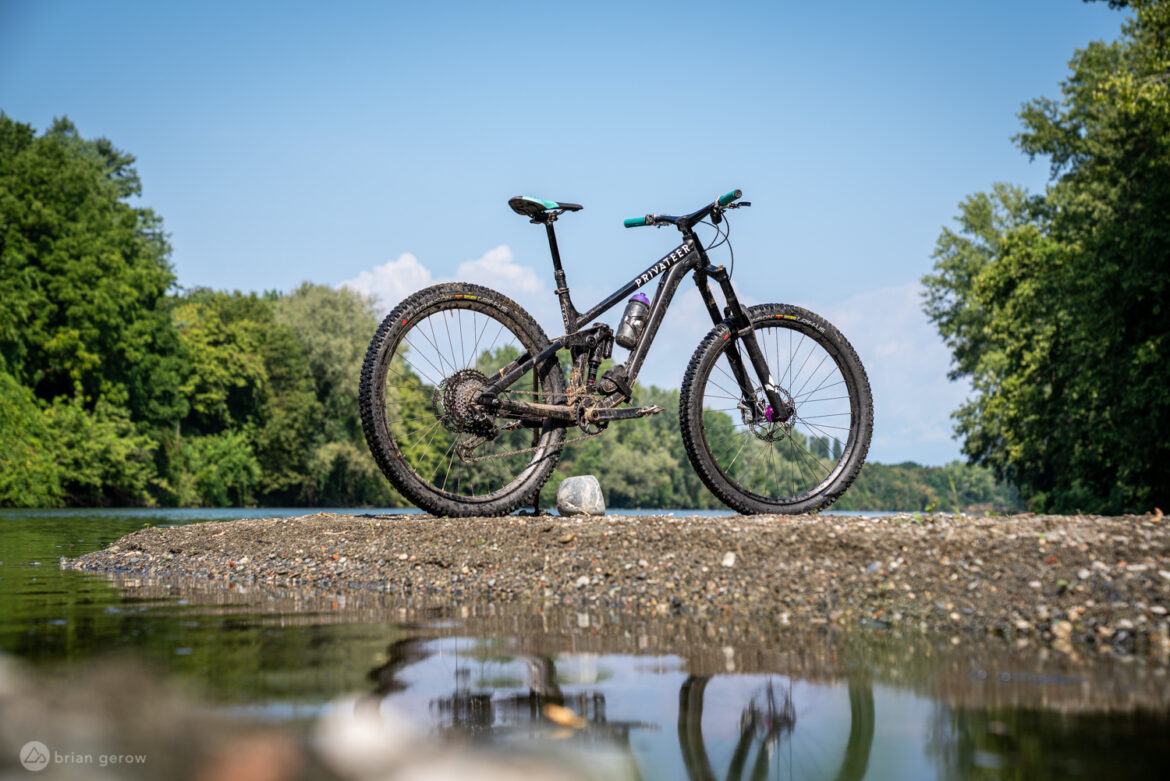
So there’s a theme. This season I got to test a load of long travel 29″ bikes that were designed for enduro racing. That theme is curated by what bikes are available, the terrain I prefer to ride, and a desire to create a varied review mix with our other editors.
While I’m still testing the Privateer 161, it has quickly become one of the most fun bikes that I’ve recently ridden. It has a grounded grip-grabbing demeanor on descents that speaks to its racing pedigree, and with the Formula Mod coil that I recently swapped in the traction feels endless on this bike. While the geometry leans forward, similar to that of the Foxy, the 161 offers more stable descending sensations — potentially making it a better bike for all-out racing.
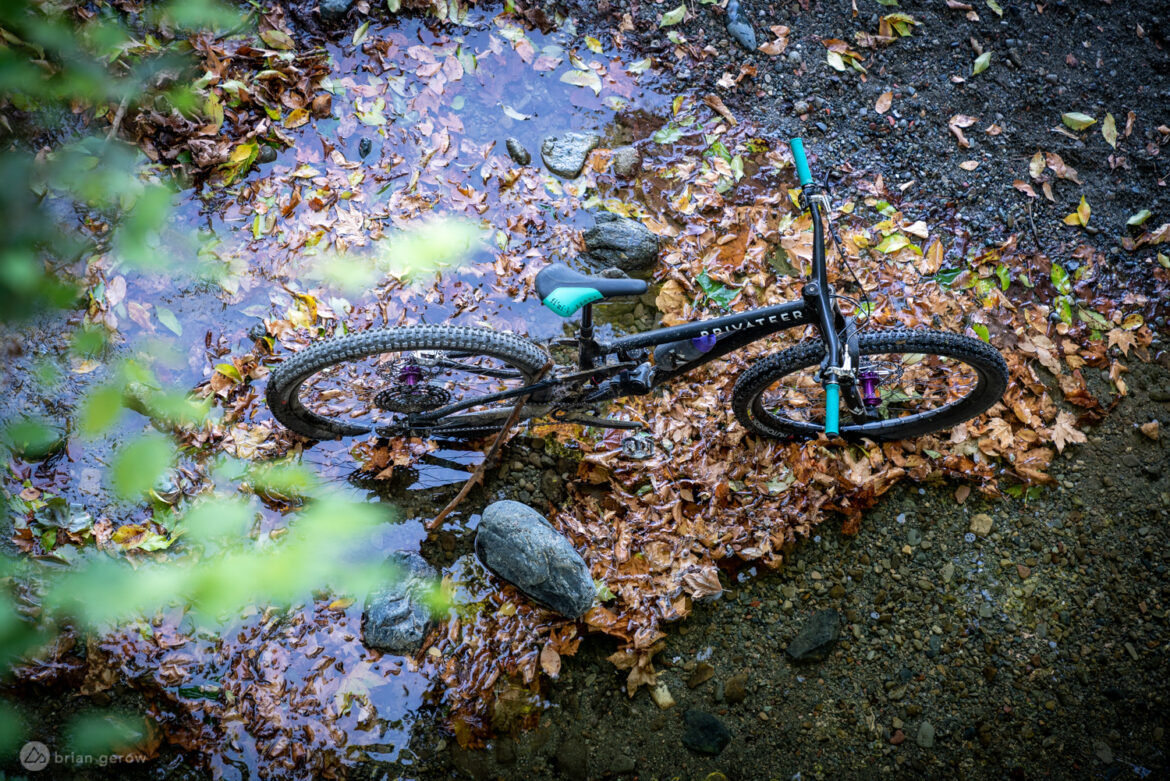


The bike has an 80° effective seat tube angle. Yup, 80°. Not a typo. The steep dropper makes the 161’s long reach feel notably short while climbing and it’s easy to keep the front tire weighted in the dirt, free from wandering. It also allows riders who would otherwise slam their saddle forward on long/slack bikes to dial in saddle placement over a wider range of the rails. On flat trails, the upright position can feel a little strange initially, but we’ll get to more of that in the coming review.
Tire clearance and cable routing on the 161 were clearly designed by someone form the UK, where a day in the slop is just another day. The seat stay bridge is thin, with no surface area to collect mud, and the chain stay clearance is about as open as it can get. Cable housing and hoses are held tightly to the frame, making for a quiet and tidy external routing arrangement over the alloy frame.
We’ll have this bike around for another few months before swapping the components over to the brand’s 141 model, so keep an eye out for the forthcoming review.
-Gerow
Pivot Switchblade

While almost every new bike has brands claiming that their bike climbs like it has 25% less travel, I have found that claim more founded on Pivot’s revised Switchblade. No, it’s not a perfect bike. More buyers would likely consider buying it as a frameset if the rear end weren’t spaced for SuperBoost 157. More buyers would likely consider buying the Switchblade if it wasn’t as expensive; pricing for the frameset is $4,100 and complete builds start at $5,500. With that price, it better be good and fortunately, the Switchblade delivers.
Pivot classifies the Switchblade as one of its two enduro bikes, with the Firebird as their longer-travel enduro bike. The Switchblade has 142mm of rear travel and comes with a 160mm fork. It is enduro-capable and proven by Eddie Masters, and what I liked about the bike most is that it inspires confidence for nearly anything on the way down, but climbs with the energy and pep of 120mm travel bikes I have ridden.

The Switchblade rockets up the hill, is alive when climbing and negotiating between thick-wooded singletrack, and keeps its lively feel on the descents. The 66° HTA gives it precise steering and the Switchblade snaps to attention when you need to quickly change course. It’s light and stiff and has a playful personality and it pops off kickers and roots with ease. Usually bikes this capable are a dread to climb with and lose some of their liveliness downhill, but the Switchblade balances these characteristics extremely well.
-Matt
Sage Powerline

If a hardtail mountain bike costs just shy of $8,000, it better be amazing. The Sage Powerline does, and it is.
Aside from being a joy to ride on everything from buff, XC-style trails to more technical, gnarly stuff, the Powerline is the sort of bike a rider buys, and holds onto for a long, long time. After all, the most progressive bike today is just a stepping stone to tomorrow’s next big thing. The Powerline is like a brand new house with all the modern conveniences of today, but the classic styling of a 1920s craftsman bungalow. It’s simultaneously modern and classic, and I love it.

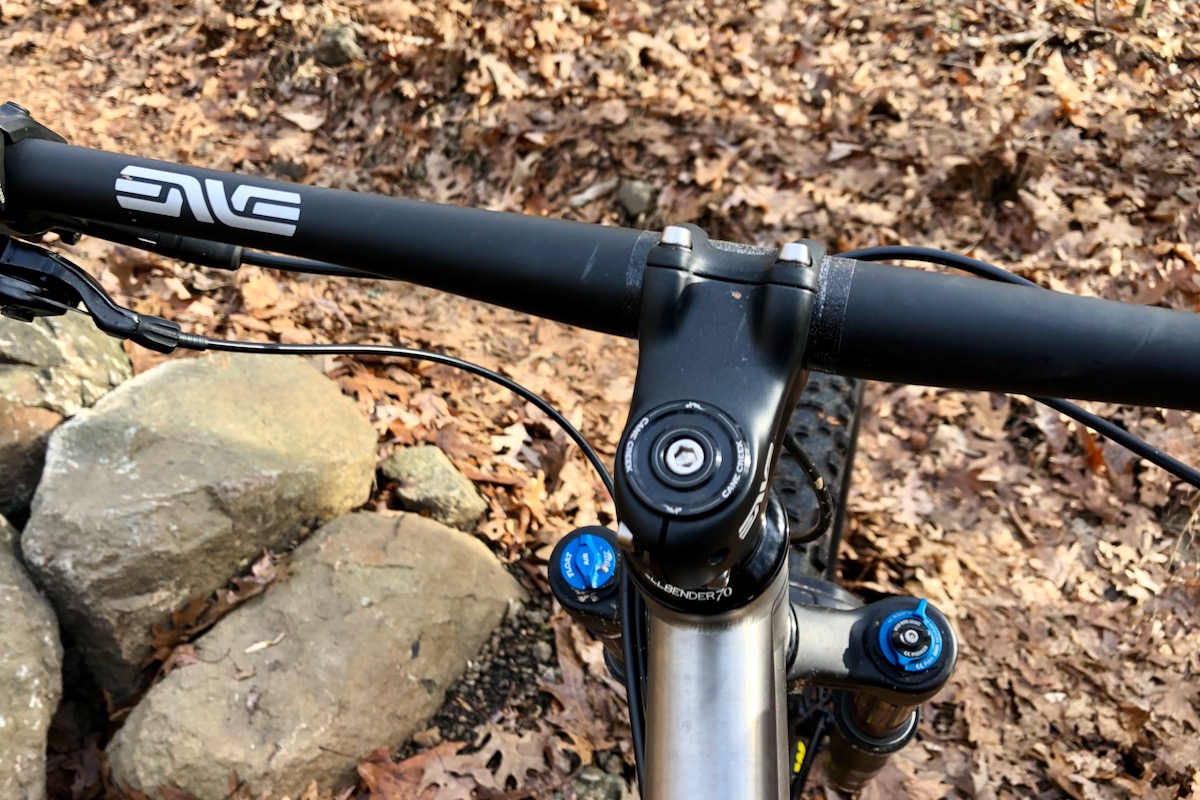
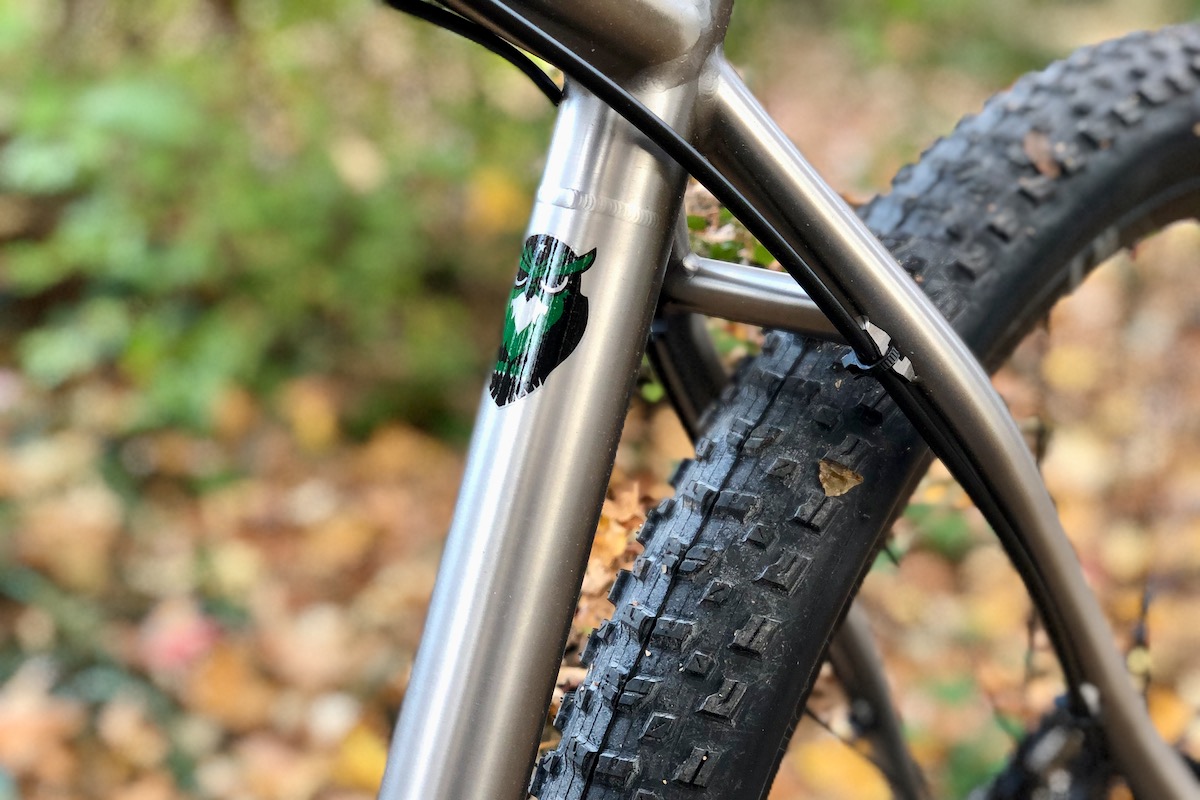
The titanium frame is exceptionally well crafted with a natural finish and classy, subtle graphics. Buyers can run a dropper post and tires up to 2.5″ wide, and builds feature modern touches like the Sage-branded, stubby saddle. Swapping just a few components can take this frame from XC race machine, to everyday trail rider, to bikepacking chariot and back again. When other bikes are no longer worth upgrading, the Sage Powerline will still be a part of riders’ stables, ready and willing for a new set of tack.
-Jeff
Santa Cruz Megatower C
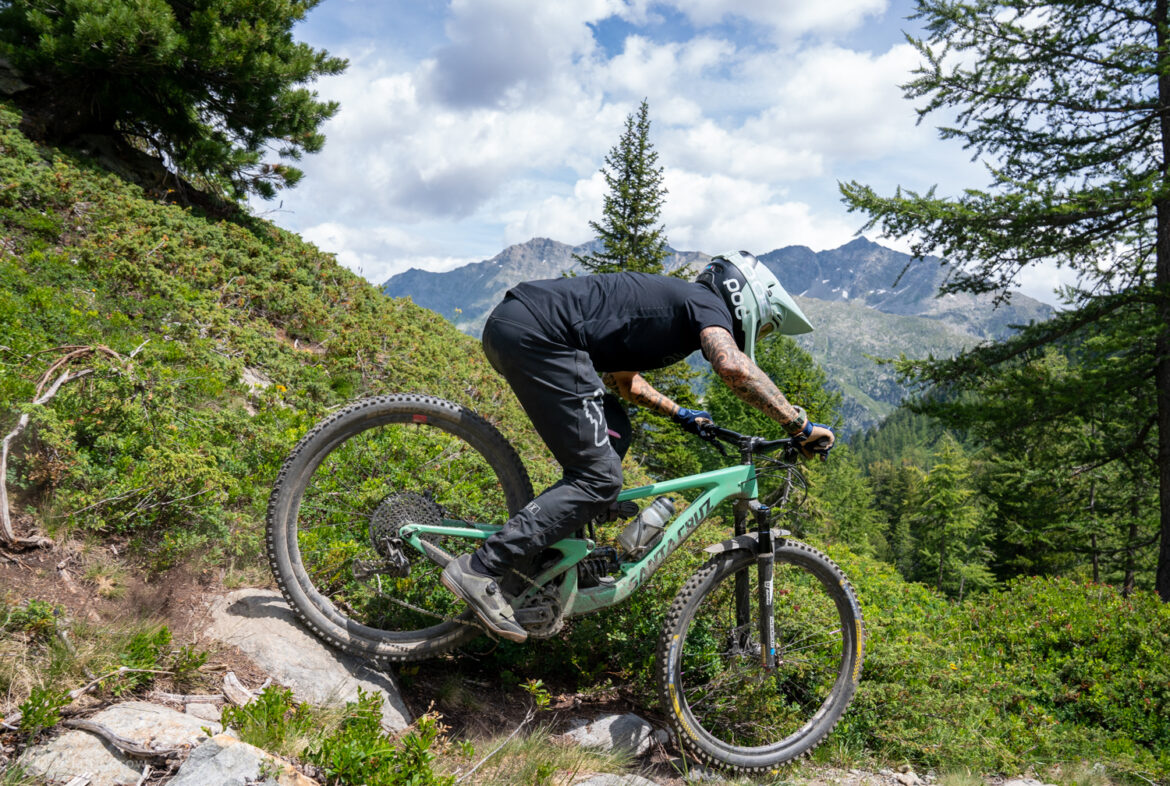
The Hillside Singers recorded a jingle in 1971 expressing their wish to “buy the world a Coke.” If given a swimming pool filled with gems, I would love to save everyone those dental bills and buy the world a Megatower. Nearly anyone could enjoy the bike’s easy adaptability and generally fun trail demeanor. This was my favorite test bike of 2020 by a sliver.
I spent some happy days in the bike park aboard the Megatower and enjoyed countless lunch rides at home. The bike’s 29″ wheels pair well with 160mm of balanced travel to create a capable platform that my skills and guts could never find the limits of. With enduro-race-inspired geometry and a build intended to keep up, this bike could comfortably take the place of a diverse quiver if it had to. I love bikes that could do it all, and the Megatower’s low weight alongside its tendency to give back what the rider puts in makes it fun on any trail. The difference between plow and play on the Megatower is a few minor suspension adjustments.
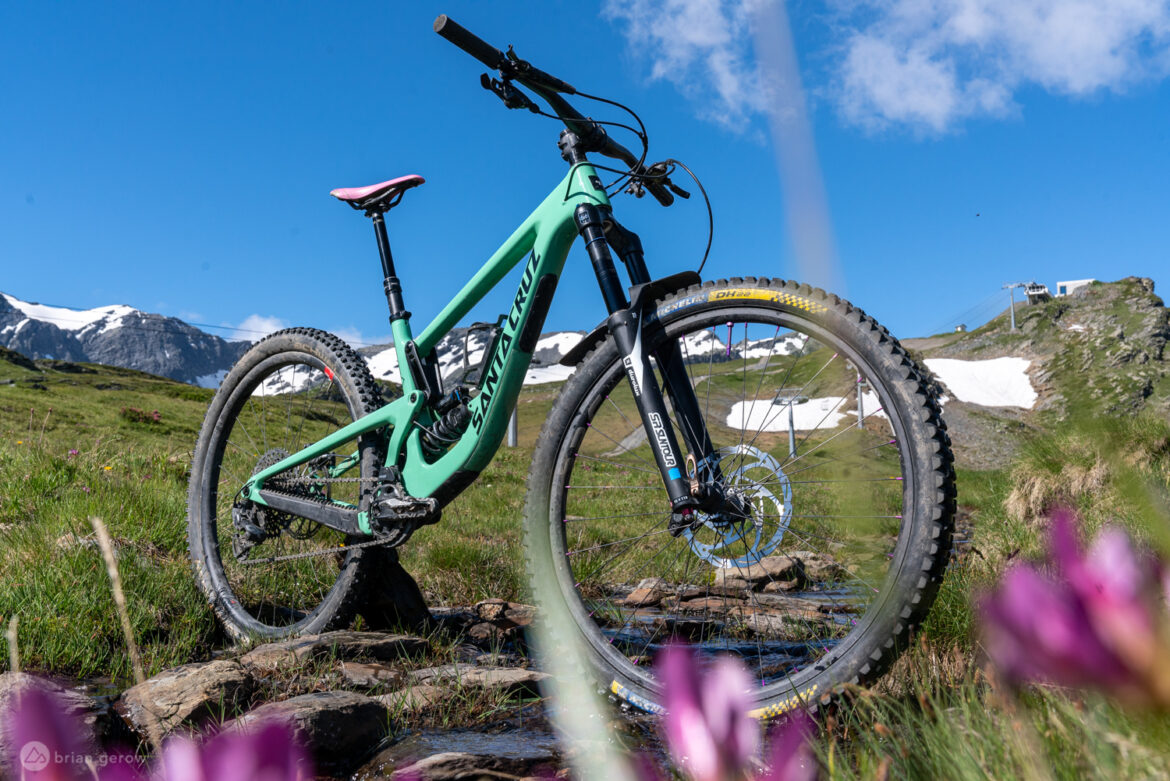


Some new test bikes feel homey and easy to ride from the jump, while others ask us to try a different riding style on for the day. The Megatower falls hard in the easy-rider category. When the shock’s low-speed switch is clicked closed the bike spins uphill in lockstep with the best long-travel machines, and the stock RockShox coil offers ample support in a sprint.
This isn’t a “race only” whip under the pull of gravity. While pro shredders like Iago Garay have no trouble piloting it at turbo speed, the platform doesn’t require that speed and skill to be enjoyed. In fact, the Megatower has such a versatile descending character that I would pick it first for a steep and rowdy backcountry bikepacking tour. It’s the kind of bike that will surprisingly save you from tired mistakes late in the day. Oh, and it looks damn good in that USFS, after-dinner mint paint job.
-Gerow
That’s it for 2020. Stay tuned for another 25+ bike reviews next season!





















11 Comments
Oct 29, 2020
Oct 29, 2020
Oct 30, 2020
Oct 29, 2020
Oct 29, 2020
Oct 29, 2020
All of the bikes we've reviewed are listed here for those who would like to catch up or read about the ones that weren't our favorites:
https://www.singletracks.com/category/mtb-reviews/
(We still liked most of them a lot, some better than others.)
Edit: One other thing to mention is these are our staff picks only. We also publish bike reviews from freelancers, but their limited picks are not included. The link above includes freelance bike reviews too.
Oct 29, 2020
Oct 30, 2020
Nice list of rides, well done, peeps.
Oct 28, 2020
This is the first "best of" list I have seen that didn't include either the Ibis Ripmo or the Ripley. I don't own either bike but every top list I have seen lately has had either or both bikes near or at the top. I'm curious, did you test either of these bikes out?
Oct 28, 2020
Oct 28, 2020
https://www.singletracks.com/mtb-reviews/our-9-favorite-mountain-bikes-we-tested-in-2019/